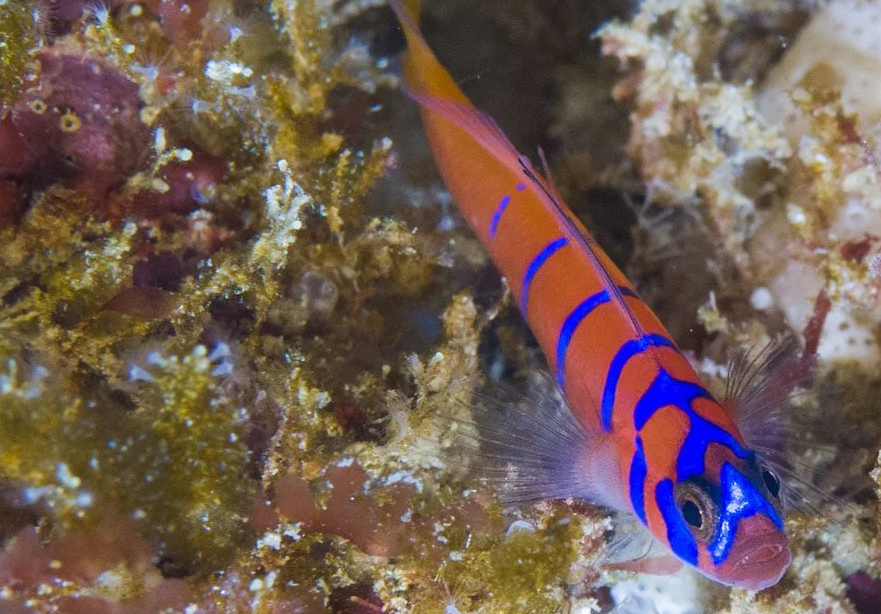
Bluebanded gobies are microcarnivores. They eat small crustaceans on the reef surface and from the water column directly above the reef surface. These gobies often hide near or under sea urchins (and the holes/hiding places that urchins create), and they do not like to stray far from these hiding places. They almost never leave direct contact with the reef surface.
Individuals of this species are pair spawners. A male bluebanded goby courts a female, and once she accepts his advances, she lays her eggs in or near his hiding place. The male then takes on all of the responsibility of protecting the nest until the eggs hatch, after which the larvae live a pelagic lifestyle. After some time living as part of the planktonic community, juveniles settle to the reef surface and begin defending a territory for future mating opportunities. A particularly interesting characteristic of the bluebanded goby is its ability to change sex. Lots of marine fishes change sex, but nearly all species can only change in one direction. Bluebanded gobies, however, can change back and forth. In order to facilitate reproducing with nearby individuals, a bluebanded goby can change sex within just a few days.
Bluebanded gobies are not one of the most densely populated species of cryptobenthic fishes in the eastern Pacific Ocean, but they are fairly common throughout their range. As they only reach lengths of a few centimeters, they are not targeted or accidentally captured by any commercial fisheries. Scientists believe this species to be one of least concern.